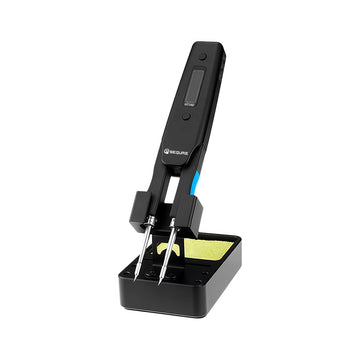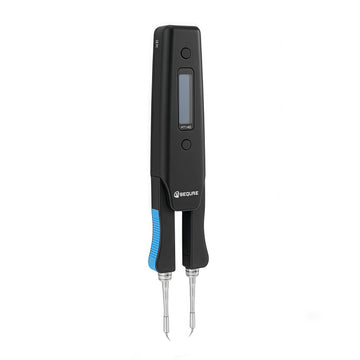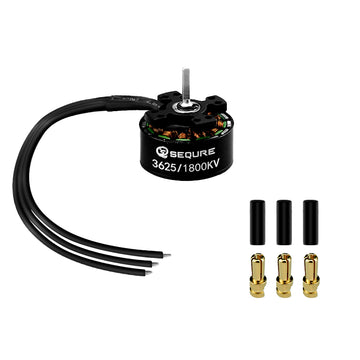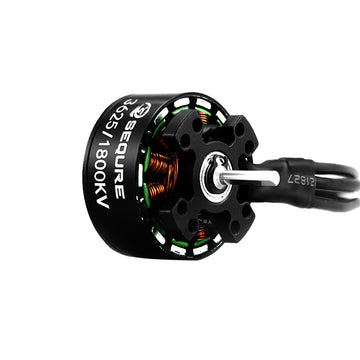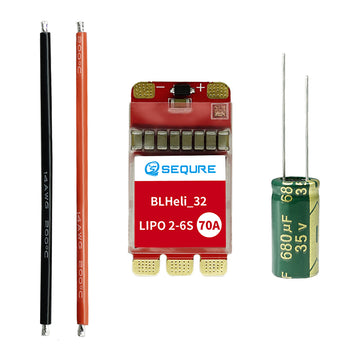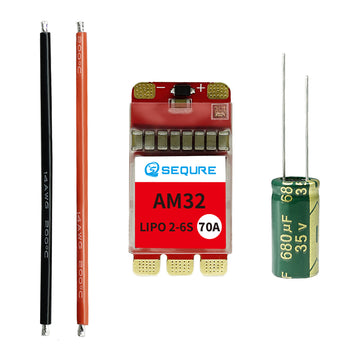How Many Do You Know About Stepper Motors?
How many do you know about stepper motors?

Want to better understand the basic principles of motors, this article can help you. Welcome to read:
The article is from Baidu Encyclopedia
Stepper motor is a kind of induction motor. Its working principle is to use electronic circuit to convert direct current into time-sharing power supply. Multi-phase sequential control current. Use this current to power stepper motor, and stepper motor can work normally. The driver is a time-sharing power supply for the stepper motor, a multi-phase sequential controller.
Although stepper motors have been widely used, stepper motors are not like ordinary DC motors. AC motors are used under routine conditions. It must be composed of a dual ring pulse signal, power drive circuit, etc. to form a control system before it can be used. Therefore, it is not easy to use a stepper motor well. It involves many professional knowledge such as machinery, electrical machinery, electronics and computers.
Stepping motor is one of the key products of mechatronics as an executive component, and it is widely used in various automation control systems. With the development of microelectronics and computer technology, the demand for stepper motors is increasing day by day, and they are applied in various fields of national economy.
Stepping motor is an actuator that converts electrical pulses into angular displacement. In layman's terms: When the stepper driver receives a pulse signal, it drives the stepper motor to rotate a fixed angle (ie step angle) in the set direction. You can control the angular displacement by controlling the number of pulses, so as to achieve accurate positioning; at the same time, you can control the speed and acceleration of the motor rotation by controlling the pulse frequency, so as to achieve the purpose of speed regulation.
Classification:
There are three types of stepper motors: permanent magnet (PM), reactive (VR) and hybrid (HB). Permanent magnet stepping is generally two-phase, with small torque and volume. The stepping angle is generally 7.5 degrees or 15 degrees; the reactive stepping is generally three-phase, which can achieve large torque output, and the stepping angle is generally 1.5 However, the noise and vibration are very large, and it has been eliminated in the 1980s in developed countries such as Europe and the United States; hybrid stepping refers to the combination of the advantages of permanent magnet and reactive, divided into two-phase and five-phase, two-phase stepping The angle is generally 1.8 degrees and the five-phase stepping angle is generally 0.72 degrees. This stepping motor is the most widely used.
Fundamental:
Usually the rotor of a motor is a permanent magnet. When the current flows through the stator winding, the stator winding generates a vector magnetic field. The magnetic field drives the rotor to rotate by an angle, so that the pair of magnetic field directions of the rotor are consistent with the magnetic field directions of the stator. When the vector magnetic field of the stator rotates by an angle. The rotor also rotates an angle with the magnetic field. Each time an electric pulse is input, the motor rotates an angle to move forward. The angular displacement that it outputs is proportional to the number of input pulses, and the speed is proportional to the pulse frequency. Change the sequence of winding energization and the motor will reverse. Therefore, the number of pulses, frequency and the energization sequence of each phase winding of the motor can be used to control the rotation of the stepper motor.
Reactive stepping motor
Because the working principle of the reactive stepping motor is relatively simple. The following first describes the principle of the three-phase reactive stepping motor.
1. Structure: The motor rotor has many small teeth evenly distributed, and the stator teeth have three excitation winding resistors, and their geometric axes are staggered from the rotor tooth axis in turn. 0, 1/3て, 2/3て, (the distance between the tooth axes of two adjacent rotors is the tooth pitch, expressed in て), that is, A is aligned with tooth 1, and B is offset to the right by 1/3て, C and tooth 3 are staggered by 2/3 to the right, A'is aligned with tooth 5. (A' is A, tooth 5 is tooth 1) The following is an expanded view of the stator and rotor:
2. Rotation: If phase A is energized, phase B and phase C are not energized, tooth 1 is aligned with A due to the action of the magnetic field (the same applies when the rotor is not subject to any force). If phase B is energized and phase A and C are not energized, tooth 2 should be aligned with B. At this time, the rotor moves to the right by 1/3て, and the offset of tooth 3 and C is 1/3て, tooth 4 and A Offset (て-1/3て)=2/3て. If phase C is energized, phase A and B are not energized, tooth 3 should be aligned with C. At this time, the rotor moves to the right by 1/3て, and the offset of tooth 4 and A is 1/3て aligned. If phase A is energized, phases B and C are not energized, tooth 4 is aligned with A, and the rotor moves to the right by 1/3 so that after A, B, C, and A are energized, tooth 4 (that is, the tooth before tooth 1 ) Move to A phase, the motor rotor rotates to the right through a tooth pitch, if you keep pressing A, B, C, A... and energize, the motor will rotate to the right every step (per pulse) 1/3て. If you press A, C, B, A... to energize, the motor will reverse. It can be seen that the position and speed of the motor have a one-to-one correspondence between the number of conduction (pulse number) and frequency. The direction is determined by the order of conduction. However, for consideration of torque, stability, noise and angle reduction. The conductivity state of A-AB-B-BC-C-CA-A is often used, so that the original 1/3 of each step is changed to 1/6. Even through different combinations of two-phase currents, 1/3 て becomes 1/12 て, 1/24 て, which is the basic theoretical basis of motor subdivision driving. It is not difficult to deduce: There is m-phase excitation winding on the motor stator, and its axis is offset from the rotor tooth axis by 1/m, 2/m...(m-1)/m,1. And the electric conduction according to a certain phase sequence, the motor can be controlled forward and backward-this is the physical condition of rotation. As long as this condition is met, we can theoretically manufacture stepper motors of any phase. For cost and other considerations, the market generally has more than two, three, four, and five phases.
3. Torque: Once the motor is energized, a magnetic field (magnetic flux Ф) will be generated between the stator and the rotor. When the rotor and the stator are staggered by a certain angle, the force F is proportional to (dФ/dθ). The magnetic flux Ф=Br*S Br is the magnetic density. S is the permeable area, F is proportional to L*D*Br, L is the effective length of the core, D is the rotor diameter, Br=N·I/RN·I is the number of ampere turns of the excitation winding (current multiplied by the number of turns) R is the magnet Hinder. Torque = Force * Radius Torque is proportional to the effective volume of the motor * Ampere turns * Magnetic density (only linear state is considered) Therefore, the larger the effective volume of the motor, the greater the number of excitation ampere turns, the smaller the air gap between the stator and the rotor, and the motor torque The bigger, and vice versa.
Folding induction sub-type stepping motor
1. Features
Compared with the traditional reaction type, the rotor is equipped with permanent magnets in the structure to provide the working point of soft magnetic materials, while the stator excitation only needs to provide a changing magnetic field instead of the energy consumption of the working point of the magnetic material. The motor has high efficiency, low current and low heat. Due to the presence of permanent magnets, the motor has a strong back EMF, and its own damping effect is relatively good, making it relatively stable during operation, low noise, and low frequency vibration. The induction sub-type can be regarded as a low-speed synchronous motor to some extent. A four-phase motor can be used for four-phase or two-phase operation. (It must be driven by bipolar voltage), which is not the case with reactive motors. For example: four-phase, eight-phase operation (A-AB-B-BC-C-CD-D-DA-A) can completely adopt two-phase eight-beat operation mode. It is not difficult to find that the conditions are C=, D=. One The internal windings of two-phase motors are exactly the same as those of four-phase motors. Small-power motors are generally directly connected to two-phase motors. For motors with higher power, to facilitate use and flexibly change the dynamic characteristics of the motor, the external wiring is often eight leads. (Four-phase), when used in this way, it can be used as a four-phase motor, and can be used as a two-phase motor winding in series or in parallel.
2. Classification
Induction sub-type motors can be divided into two-phase motors, three-phase motors, four-phase motors, five-phase motors, etc. according to the number of phases.
3. Terminology of static index of stepper motor
(1) Number of phases: the number of pairs of excitation coils that produce N and S magnetic fields of different pairs of poles. Commonly used m said.
(2) Beats: the number of pulses required to complete a periodic change of the magnetic field or the conduction state is represented by n, or the number of pulses required for the motor to rotate through a pitch angle. Take a four-phase motor as an example, with four-phase four-beat operation The mode is AB-BC-CD-DA-AB, and the four-phase eight-beat operation mode is A-AB-B-BC-C-CD-D-DA-A.
(3) Step angle: Corresponding to a pulse signal, the angular displacement of the motor rotor is represented by θ. θ=360°/(number of rotor teeth*number of running beats), taking conventional two-phase and four-phase motors with 50-tooth rotor teeth as an example. The step angle in four-beat operation is θ=360 degrees/(50*4)=1.8 degrees (commonly known as full step), and the step angle in eight-beat operation is θ=360 degrees/(50*8)=0.9 degrees (commonly known as Half step).
(4) Positioning torque: when the motor is not powered on, the locking torque of the motor rotor itself (caused by the harmonics of the magnetic field tooth profile and mechanical errors)
(5) Static torque: The locking torque of the motor shaft when the motor is not rotating under the action of the rated static electricity. This torque is a measure of the volume of the motor, and has nothing to do with the driving voltage and driving power. Although the static torque is proportional to the number of electromagnetic excitation ampere turns and is related to the air gap between the stator rotors, it is undesirable to reduce the air gap and increase the excitation ampere turns to increase the static torque, which will cause the motor to heat up And mechanical noise.
4. Dynamic indicators and terms:
(1) Step angle accuracy: The error between the actual value and the theoretical value of each step angle of the stepper motor. Expressed in percentage: error/step angle*100%. The value of different running beats is different, it should be within 5% when running in four beats, and within 15% when running in eight beats.
(2) Loss of step: The number of running steps when the motor is running is not equal to the theoretical number of steps. Call it out of step.
(3) Misalignment angle: The angle at which the rotor tooth axis deviates from the stator tooth axis. There must be an offset angle in the motor operation. The error caused by the offset angle cannot be solved by the use of subdivision drive.
(4) Maximum no-load starting frequency: The maximum frequency at which the motor can be started directly without load under a certain driving mode, voltage and rated current.
(5) Maximum no-load operating frequency: The maximum speed frequency of the motor without load under a certain driving mode, voltage and rated current.
(6) Operating torque-frequency characteristics: The curve of the relationship between output torque and frequency measured under certain test conditions is called operating torque-frequency characteristics. This is the most important of the motor's many dynamic curves and the fundamental basis for motor selection. . As shown in the figure below: Other characteristics include inertia frequency characteristics and starting frequency characteristics. Once the motor is selected, the static torque of the motor is determined, but the dynamic torque is not. The dynamic torque of the motor depends on the average current (not the static current) of the motor during operation. The larger the average current, the greater the output torque of the motor, which is the The harder the frequency characteristic. As shown in the figure below: Among them, curve 3 has the largest current or the highest voltage; curve 1 has the smallest current or the lowest voltage, and the intersection of the curve and the load is the maximum speed point of the load. To make the average current large, increase the drive voltage as much as possible, and use a small inductance and large current motor.
(7) The resonance point of the motor: stepping motors have a fixed resonance area, the resonance area of the two-phase and four-phase induction type is generally between 180-250pps (step angle 1.8 degrees) or about 400pps (step angle 0.9 degrees), the higher the motor drive voltage, the greater the motor current, the lighter the load, and the smaller the size of the motor, the resonance zone will shift upward, and vice versa. In order to make the motor output large torque without losing step and the entire system The noise is reduced, and the general operating point should be more offset from the resonance zone.
(8)Motor forward and reverse control: When the motor winding power sequence is AB-BC-CD-DA or (), it is forward rotation, and when the power sequence is DA-CD-BC-AB or (), it is reverse.
Basic parameters:
Inherent step angle of folding motor
It represents the angle at which the motor rotates every time the control system sends a step pulse signal. A step angle value is given when the motor leaves the factory. For example, the value given by the 86BYG250A motor is 0.9°/1.8° (indicating that it is 0.9° in half-step work and 1.8° in full-step work). This step angle is It can be called the "motor inherent step angle", it is not necessarily the actual step angle when the motor is actually working, the true step angle is related to the driver.
Generally, the general calculation of stepping motor step angle β is calculated as follows.
β=360°/(Z·m·K)
Where β-step angle of stepping motor;
Z-the number of rotor teeth;
m-the number of phases of the stepping motor;
K―Control coefficient, which is the proportional coefficient of beats and phases
Phase number of folding stepper motor
Refers to the number of coil groups inside the motor. At present, two-phase, three-phase, four-phase, and five-phase stepper motors are commonly used. The number of phases of the motor is different, and the step angle is also different. Generally, the step angle of a two-phase motor is 0.9°/1.8°, a three-phase motor is 0.75°/1.5°, and a five-phase motor is 0.36°/0.72°. When there is no subdivision driver, users mainly rely on selecting stepping motors with different phase numbers to meet their own step angle requirements. If a subdivision driver is used, the "phase number" will become meaningless, and the user only needs to change the subdivision number on the driver to change the step angle.
Folding torque
1. HOLDING TORQUE (holding torque)
It refers to the torque that the stator locks the rotor when the stepper motor is energized but not rotating. It is one of the most important parameters of a stepper motor. Generally, the torque of a stepper motor at low speed is close to the holding torque. Since the output torque of a stepper motor decays continuously with the increase of speed, and the output power also changes with the increase of speed, the holding torque has become one of the most important parameters to measure the stepper motor. For example, when people say a 2N.m stepper motor, it refers to a stepper motor with a holding torque of 2N.m unless otherwise specified.
2. DETENT TORQUE (no excitation holding torque):
It refers to the torque that the stator locks the rotor when the stepper motor is not energized. DETENT TORQUE does not have a unified translation method in China, which is easy to cause misunderstanding; because the rotor of the reactive stepping motor is not a permanent magnet material, it does not have DETENT TORQUE.
Main features of folding:
1. Generally, the accuracy error of a stepping motor is 3-5% of the step angle, and it does not accumulate.
2. The maximum temperature allowed by the appearance of the stepper motor.
The high temperature of the stepper motor will first demagnetize the magnetic material of the motor, which will cause the torque to drop and even lose step. Therefore, the maximum temperature allowed by the motor surface should depend on the demagnetization point of different motor magnetic materials; generally speaking, the demagnetization of magnetic materials The points are above 130 degrees Celsius, and some are even as high as 200 degrees Celsius, so the external temperature of the stepping motor is completely normal at 80-90 degrees Celsius.
3. The torque of the stepper motor will decrease with the increase of the speed.
When the stepper motor rotates, the inductance of each phase winding of the motor will form a back electromotive force; the higher the frequency, the greater the back electromotive force. Under its action, the phase current of the motor decreases with the increase of frequency (or speed), resulting in a decrease in torque.
4. The stepper motor can run normally at low speed, but if it is higher than a certain speed, it will not start, accompanied by howling.
The stepper motor has a technical parameter: no-load start frequency, that is, the pulse frequency that the stepper motor can start normally under no-load conditions. If the pulse frequency is higher than this value, the motor cannot start normally and may lose steps or stall. In the case of load, the starting frequency should be lower. If the motor is to achieve high-speed rotation, the pulse frequency should have an acceleration process, that is, the start frequency is low, and then increase to the desired high frequency according to a certain acceleration (the motor speed increases from low speed to high speed).
With its remarkable characteristics, stepping motors are playing an important role in the era of digital manufacturing. With the development of different digital technologies and the improvement of stepper motor technology, stepper motors will be used in more fields
Main features of folding
1 The stepper motor must be driven before it can run. The drive signal must be a pulse signal. When there is no pulse, the stepper motor is stationary, such as
If the appropriate pulse signal is added, it will rotate at a certain angle (called the step angle). The speed of rotation is proportional to the frequency of the pulse.
2 The stepping angle of a three-phase stepping motor is 7.5 degrees, and a circle of 360 degrees requires 48 pulses to complete.
3 The stepper motor has the superior characteristics of instant start and rapid stop.
4 Changing the sequence of pulses can easily change the direction of rotation.
Therefore, current printers, plotters, robots, and other devices are powered by stepper motors.
Features of Folding Drive
(1) ASIC that constitutes the stepper motor driver system:
A. Pulse splitter integrated circuits: such as Sanyo's PMM8713, PMM8723, PMM8714, etc.
B. Controller integrated circuits including pulse distributor and current chopper: such as L297 and L6506 of SGS.
C. Driver ICs that only contain power drive (or current control and protection circuits): such as MTD1110 (four-phase chopper drive) and MTD2001 (two-phase, H-bridge, chopper drive) from Shindenmoto Industries.
D. Drive controller integrated circuits that include pulse divider, power drive, current control and protection circuits, such as Toshiba’s TB6560AHQ, MOTOROLA’s SAA1042 (four-phase) and ALLEGRO’s UCN5804 (four-phase), etc. .
(2) Overview of "subdivision drive":
The driving method of subdividing the "motor inherent step angle" into several small steps is called subdivision driving. The subdivision is achieved by the precise control of the phase current of the stepper motor by the driver, and has nothing to do with the motor itself. The principle is that the current of the energized phase of the stator does not rise to position once, and the current of the de-energized phase does not drop to 0 once (the winding current waveform is no longer an approximate square wave, but an N-level approximate step wave), then the stator winding current The resultant magnetic field force will cause the rotor to have N new equilibrium positions (form N step angles).
Speed measurement method
The stepping motor converts the pulse signal into angular displacement or linear displacement.
One is good overload. Its speed is not affected by the size of the load. Unlike ordinary motors, when the load increases, the speed will drop. Stepper motors have strict requirements on speed and position when used.
The second is convenient control. The stepper motor rotates in units of "steps", and the digital features are more obvious.
The third is the simple structure of the whole machine. The traditional mechanical speed and position control structure is more complicated and difficult to adjust. After using a stepper motor, the structure of the whole machine becomes simple and compact. The tachometer motor converts the speed into a voltage and transmits it to the input terminal as a feedback signal. The tachometer motor is an auxiliary motor. The tachometer motor is installed at the end of the ordinary DC motor, and the voltage generated by the tachometer motor is fed back to the DC power supply to achieve the purpose of controlling the speed of the DC motor. [1]
Design ideas
Functional module design
This module can be divided into the following 3 parts:
· Single chip microcomputer system: control stepping motor;
· Peripheral circuit: PIC microcontroller and stepping motor interface circuit;
· PIC program: compile the interface program of the single-chip microcomputer to control the stepping motor to realize the output function of the triangle wave signal.
(1) The interface between stepping motor and single chip microcomputer.
The single-chip microcomputer is a control processor with excellent performance. When controlling the stepping motor, the interface component must have the following functions.
① Voltage isolation function.
The microcontroller works at 5V, while the stepper motor works at tens of V, or even higher. Once the voltage of the stepper motor is connected to the single-chip microcomputer, it will damage the single-chip microcomputer; the signal of the stepper motor will interfere with the single-chip microcomputer, and may also cause system work errors. Therefore, the interface device must have an isolation function.
② Information transmission function.
The interface component should be able to transmit the control information of the single-chip microcomputer to the stepper motor loop, and generate the control information required for the work. Corresponding to different working methods, the interface component should be able to generate corresponding work control waveforms.
③ Produce the required different frequencies.
In order to make the stepper motor work at different speeds to adapt to different purposes, the interface components should be able to produce different operating frequencies.
(2) Voltage isolation interface.
The voltage isolation interface is dedicated to isolate the single-chip microcomputer in the low-voltage part and the stepper motor drive circuit in the high-voltage part to ensure their normal operation.
The voltage isolation interface can use pulse transformer or photoelectric isolator, and now it basically uses photoelectric isolator. The output signal of the single-chip microcomputer can be directly sent to the base of the transistor through a TTL gate circuit, and then the light-emitting diode of the photoelectric coupling device is driven by the transistor.
The light from the light-emitting diodes shines on the photosensitive tube inside the photoelectric coupling device, converts it into an electric signal, and then drives the power amplifier circuit of the stepper motor. The current amplifier interface is the preamplifier circuit of the stepper motor power amplifier circuit. Its function is to amplify the output signal of the photoelectric isolator in order to provide a large enough drive current to the power amplifier circuit.
(3) Working mode interface and frequency generator.
To control a stepping motor with a single-chip microcomputer, it is necessary to control the stepping motor with 3 I/0 lines on the input and output interface. At this time, the single-chip microcomputer uses the RA0, RAI, and RA2 of the I/O port to control the three-phase of the stepping motor [ 2].
related information
Folding stepping motor accuracy
Generally, the accuracy of a stepper motor is 3-5% of the step angle and does not accumulate.
Allowable value of folded surface temperature
The high temperature of the stepper motor will first demagnetize the magnetic material of the motor, which will cause the torque to drop and even lose step. Therefore, the maximum temperature allowed by the motor surface should depend on the demagnetization point of different motor magnetic materials; generally speaking, the demagnetization of magnetic materials The points are all above 130 degrees Celsius, and some are even as high as 200 degrees Celsius, so the surface temperature of the stepper motor is completely normal at 80-90 degrees Celsius.
Folding torque is inversely proportional to speed
When the stepper motor rotates, the inductance of each phase winding of the motor will form a back electromotive force; the higher the frequency, the greater the back electromotive force. Under its action, the phase current of the motor decreases with the increase of frequency (or speed), resulting in a decrease in torque.
Why can't the stepper motor pulse frequency be higher than a certain value to start
The stepper motor has a technical parameter: no-load start frequency, that is, the pulse frequency that the stepper motor can start normally under no-load conditions. If the pulse frequency is higher than this value, the motor cannot start normally and may lose steps or stall. In the case of load, the starting frequency should be lower. If the motor is to achieve high-speed rotation, the pulse frequency should have an acceleration process, that is, the start frequency is low, and then increase to the desired high frequency according to a certain acceleration (the motor speed increases from low speed to high speed).
Folding method to reduce vibration and noise
Large vibration and noise when the stepper motor rotates at low speed are its inherent shortcomings. Generally, the following solutions can be used to overcome:
A. If the stepper motor is working in the resonance zone, the resonance zone can be avoided by changing the reduction ratio and other mechanical transmission;
B. Use the driver with subdivision function, which is the most commonly used and easiest method;
C. Change to a stepping motor with a smaller step angle, such as a three-phase or five-phase stepping motor;
D. Changing to an AC servo motor can almost completely overcome vibration and noise, but the cost is higher;
E. Add a magnetic damper to the motor shaft. This product is already on the market, but the mechanical structure has changed a lot.
Subdivision and accuracy of folding drive
The subdivision technology of the stepper motor is essentially an electronic damping technology (please refer to the relevant literature). Its main purpose is to reduce or eliminate the low-frequency vibration of the stepper motor. Improving the operation accuracy of the motor is only a side function of the subdivision technology. For example, for a two-phase hybrid stepping motor with a step angle of 1.8°, if the subdivision number of the subdivision driver is set to 4, then the motor's operating resolution is 0.45° per pulse. Can the accuracy of the motor reach or approach 0.45°, also depends on other factors such as the subdivision current control accuracy of the subdivision driver. The precision of subdivision drivers of different manufacturers may vary greatly; the greater the subdivision number, the more difficult it is to control the precision.
Folding series connection method and parallel connection method
The difference between the series connection method and parallel connection method of the four-phase hybrid stepping motor and the driver:
The four-phase hybrid stepping motor is generally driven by a two-phase driver. Therefore, the four-phase motor can be connected into two phases by using a series connection method or a parallel connection method when connecting. The series connection method is generally used in the occasions where the motor speed is low. At this time, the driver output current required is 0.7 times of the motor phase current, so the motor heat is small; the parallel connection method is generally used in the occasions where the motor speed is high (also called high-speed connection). Method), the required driver output current is 1.4 times the motor phase current, so the motor generates more heat.
Folding drive power supply
A. Determination of voltage
The power supply voltage of the hybrid stepping motor driver is generally a wide range (for example, the power supply voltage of IM483 is 12~48VDC), and the power supply voltage is usually selected according to the working speed and response requirements of the motor. If the motor's working speed is high or the response requirement is quicker, then the voltage value is also high, but note that the ripple of the power supply voltage cannot exceed the maximum input voltage of the drive, otherwise the drive may be damaged.
B. Determination of current
The power supply current is generally determined according to the output phase current I of the driver. If a linear power supply is used, the power supply current can generally be 1.1 to 1.3 times I; if a switching power supply is used, the power supply current can generally be 1.5 to 2.0 times I.
Folding offline signal FREE use
In the hybrid stepping motor driver, when the offline signal FREE is low, the current output from the driver to the motor is cut off, and the motor rotor is in a free state (offline state). In some automation equipment, if the motor shaft is required to be directly rotated (manual mode) when the drive is not powered on, the FREE signal can be set low to make the motor offline for manual operation or adjustment. After manual completion, set the FREE signal high again to continue automatic control.
Folding two-phase stepping motor steering change
Just swap the A+ and A- (or B+ and B-) of the motor and driver wiring.
Control example
As an example, we use a single-pole four-phase stepper motor. Its structure is shown in Figure 1:
The four windings lead to four phases (phase A1 phase A2 phase B1 phase B2) and two common lines (connected to the positive pole of the power supply). Connect one phase of the winding to the ground wire of the power supply. This winding will be excited. We adopt a four-phase and eight-beat control method, that is, phase 1 and phase 2 are turned on alternately, which can improve the resolution. Each step can be turned by 0.9° to control the excitation sequence of the motor forward rotation as follows:
If the motor is required to reverse, just reverse the excitation signal and transmit it.
2 Control plan
The block diagram of the control system is as follows
This program uses AT89S51 as the main control device. It is compatible with AT89C51, and also adds SPI interface and watchdog module, which not only makes program debugging more convenient, but also makes the program run more stable. In the scheme, the single-chip microcomputer mainly realizes the collection of field signals and calculates the direction and speed information of the stepper motor. Then send it to CPLD.
CPLD adopts EPM7128SLC84-15, EPM7128 is programmable large-scale logic device, it is MAX7000 series products of ALTERA Company. It has the characteristics of high impedance, electrically erasable, etc. The usable unit is 2500, and the working voltage is +5V. After the CPLD receives the information sent by the microcontroller, it converts it into a corresponding control signal and outputs it to the stepper motor driver. The driver processes the control signal and inputs it into the motor windings, thus realizing the effective control of the motor.
2.1 Motor driver hardware structure
The motor driver uses the following circuit:
The resistance value of R1-R8 is 320Ω. The resistance value of R9-R12 is 2.2KΩ. Q1-Q4 are Darlington tubes D401A, and Q5-Q8 are S8550. J1 and J2 are connected with the six leads of the stepper motor.
advantage disadvantage
Folding advantages
1. The angle of motor rotation is proportional to the number of pulses;
2. Maximum torque when the motor stops (when the winding is energized);
3. Since the accuracy of each step is 3% to 5%, and the error of one step will not be accumulated to the next step, it has better position accuracy and movement repeatability;
4. Excellent start-stop and reverse response;
5. Because there are no brushes and high reliability, the life of the motor depends only on the life of the bearing;
6. The response of the motor is only determined by the digital input pulse, so open-loop control can be adopted, which makes the structure of the motor relatively simple and controllable.
Made cost
7. Just connect the load directly to the shaft of the motor can also rotate synchronously at very low speed.
8. Since the speed is proportional to the pulse frequency, there is a relatively wide speed range.
Stepper Motors Folding disadvantages
1. If improper control is easy to produce resonance;
2. It is difficult to run to a higher speed.
3. Difficult to obtain large torque
4. There is no advantage in terms of volume and weight and low energy efficiency.
5. The synchronization will be broken when the load is exceeded, and vibration and noise will be emitted when working at high speed.
Dear Customer/DIYer
Thank you very much for your support and hope you have a happy and interesting shopping experience. We are very welcome to the majority of customers and friends to participate in our DIY interesting articles sharing activities.
Share & Cash Back
The number of words is more than 300 words, have exquisite picture in the article. Send us your article. After check your article and it pass through, we will cashback the amount of 5-8 dollars according to the quality of the articles.
Welcome to contact this email (info@sequremall.com) and send us the articles for checking.







